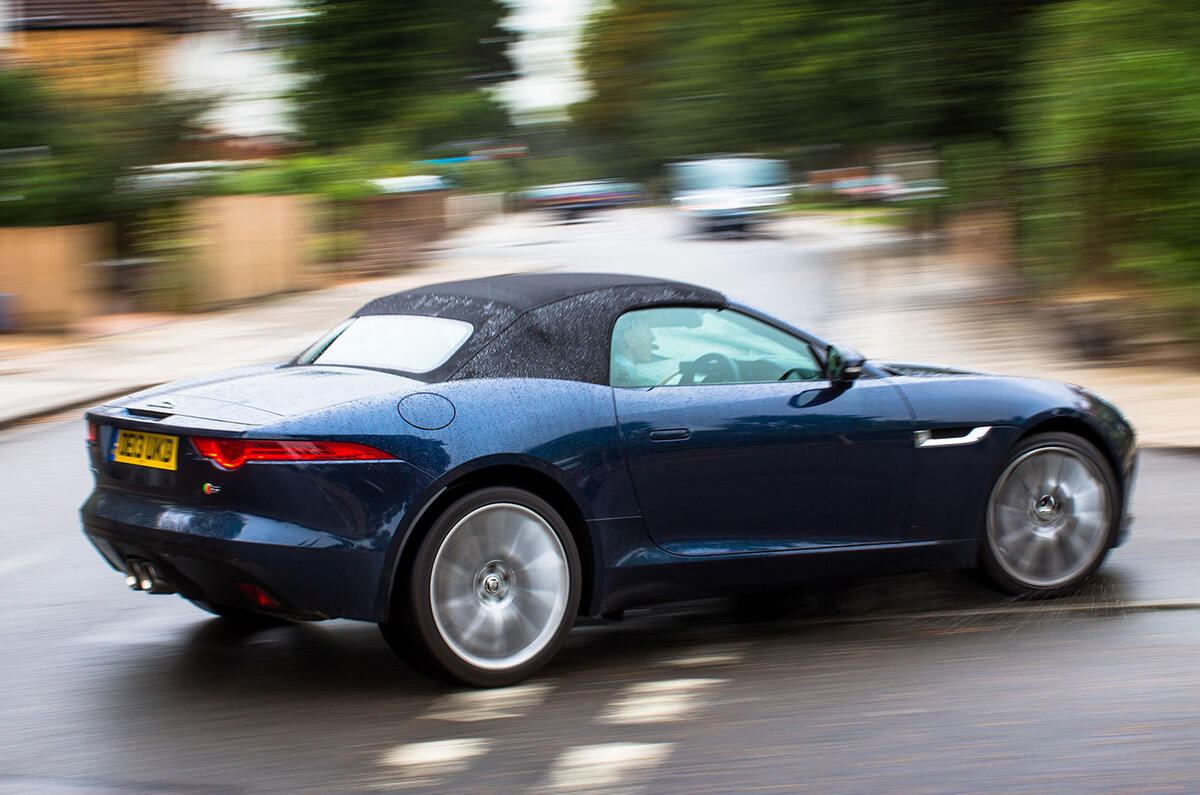There are times when you’re barrelling about on average British roads in sunny weather, when you wonder whether all the extra capability built into cars like the Jaguar F-Type is strictly necessary.
I’m talking about stuff like extra stability, extra throttle sensitivity (and poke), extra steering authority and that firmness of suspension that affords a higher-than-usual degree of connection to the road.
Today, emphatically, is not one of those days. I’ve just been to Beaulieu and back for a meeting, in driving rain and dangerous road conditions, with puddles everywhere and serious aquaplaning a constant danger.
On this 170-mile journey to the motor museum and back, every one of the F-type’s enhanced abilities came into play – especially since I had no time to waste.
The biggest boon was that this low, wide-tracked sports car presented far less side area to the crosswind that blew constantly, which meant the Jag was stable when ordinary machinery — let alone white vans — were being blown alarmingly about by constant gusts.
The sharp, accurate steering was ideal for picking a path beside the twin, water-filled tracks that lie in rainy weather on many British motorways.
The extreme stability came perfectly into play when we struck pools of lying water at 70mph; the car tracked like an arrow.
The fine brakes and the in-touch chassis provided faultless reassurance when a couple of quick stops were needed, to avoid trucks jinking abruptly around standing water.
And the nose-weight of this front-engined car was a boon when I compared myself with the fortunes of an accompanying Porsche driver, who seemed to have a few more 'Omigod' moments than me because of his lightly loaded front wheels.
I arrived back at the office full of respect for the Jag’s ability to keep me safe, realising that chassis, brake and steering sophistication are there for more than high performance.




Join the debate
Add your comment
-
For all of the above